Review: LG G6
Mar 30, 2017, 10:30 AM by Eric M. Zeman
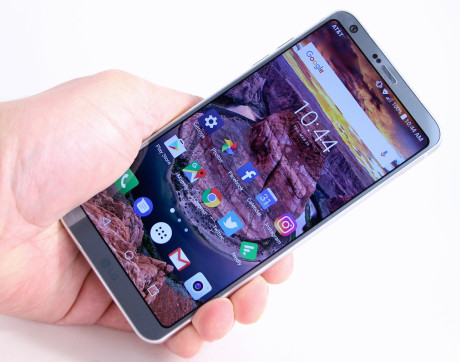
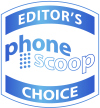
LG G6
The LG G6 is a strong offering from the Korean company that goes toe-to-toe with the best from Apple and Samsung. The G6 features a gorgeous design, the best materials, a waterproof chassis, and killer cameras. Toss in extras like Google Assistant, a unique screen and powerful Android software, and the G6 is hard to beat. Here is Phone Scoop's in-depth review of LG's 2017 flagship handset.
Hardware
Is It Your Type?
The LG G6 is a high-end, powerful handset from LG that covers all the bases and then some. If you're in the market for a classy, waterproof Android smartphone that nearly does it all, the LG G6 should be at the top of your list.
Body
The G6 is LG's masterwork. There's no doubt in my mind that it's the finest handset to ever come from LG's designers and engineers in Seoul. The G6 entirely makes up for last year's weak and ungainly G5, and rivals the best from Apple, Samsung, and HTC. LG has outdone itself and set a new bar in combining function and form.
LG broke away from the cheap plastic designs of its early G series phones with the all-metal 2016 G5. This year's flagship elevates LG's design chops even further. The G6 features an aluminum frame that's sandwiched between two pieces of glass. The phone is a bit oblong thanks to the new screen aspect ratio, but the general shape is conservative with somewhat rounded side edges and a 3D curved rear panel. Metal and glass phones may not be for everyone, but it looks classy, it feels classy, it is classy. Whether you go for the platinum or black, the G6 is refined and impressive.
The phone has a huge 5.7-inch screen and yet LG managed to minimize the footprint thanks to the screen shape and incredibly slim bezels all the way around. The G6's body is significantly smaller than other large-screen phones like the Apple iPhone 7 Plus, Google Pixel XL, etc. The narrow shape makes the phone easy to hold and use. Despite the big screen, I was able to frequently use the G6 one-handed. People with the smallest hands may find the G6 awkward, but I think the majority of people will be able to use the phone easily. I do wish the phone were a tad thinner. At 8.3mm thick, it's slightly thicker than its competition. The G6 is also a little on the heavy side. It fits in most pockets with ease.
You can't ask for finer materials and build quality. The flat front panel is made from Gorilla Glass 3, while the curved rear panel is Gorilla Glass 5, and the frame is milled from solid aluminum. If you're wondering why the front isn't Gorilla Glass 5, it's because other aspects of the design (the metal frame, flat face, and physically rounded screen corners) improve durability in a way that takes stress off the screen if it's dropped. LG claims this allowed it to select Gorilla Glass 3 for the front without sacrificing durability.
The frame has antenna lines here and there, and attractive chamfers on both the front and back. The glass panels are fitted into the metal frame with a high degree of precision. I really like the feel of the smooth back surface, which curves gently to meet the frame. The fit and finish is fantastic.

LG stretched the display from the standard 16:9 aspect ratio to a taller “18:9” (2:1) aspect ratio. At the same time, LG slimmed down the bezels. The result is a tall, narrow phone that looks different from what you're used to. (The Samsung Galaxy S8 adopted a similar aspect ratio and tall design.) Above the screen you'll see the usual sensors and speaker, crammed into a very thin space. These elements are more visible on the platinum color than they are on the black color. LG's logo is the only thing below the display. The phone has no front buttons at all; it uses software buttons to interact with the user interface.
I'm glad LG has moved away from its rear-mounted button configuration. You'll find the volume buttons on the side. These buttons are separate keys that have good profiles, travel, and feedback. You can use the volume button to launch the camera if you wish. The top of the phone has a 3.5mm headphone jack, something the iPhone 7, Moto Z, and HTC U Ultra all lack. The right edge holds the SIM/memory card tray. The tray is rather wide, thanks to its side-by-side layout. I had no trouble ejecting it with a SIM tray tool. I wish the tray were metal and not plastic. A USB-C port is positioned in the middle of the phone's bottom edge and the speakerphone is next to it. These outer controls and ports all work as they should.
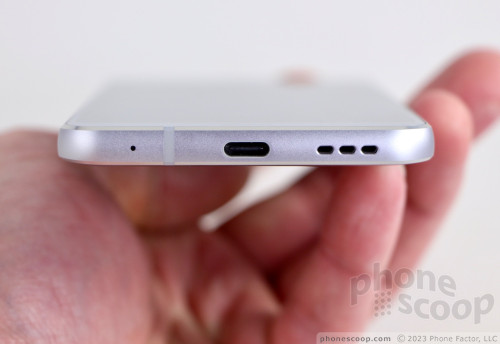
The curvy glass rear panel is gorgeous. I'm more partial to the platinum than the black, but both are stunning in their quality. The platinum color has a grainy finish underneath the glass that I find particularly appealing. It's mostly flat, but does curve just a bit near the frame, on all four sides. The glass and frame are sealed up tight, so there's no access to the battery.
If there's one thing I don't like about the G6, it's how LG treated the camera module. The dual-camera array is where you expect it to be, near the top edge. The wide-angle lens is on the left and the standard-angle lens in on the right with the two-tone flash in between. LG cut a section out of the rear panel's glass to fit the module, which is itself covered in glass. The joint between the two pieces of glass is a bit rough all the way around. I think LG could have done a better job here. LG positioned the fingerprint reader below the camera module. I wish it were just a bit bigger, but it's no problem to find by feel. The reader is also the phone's lock button. The action is just okay.
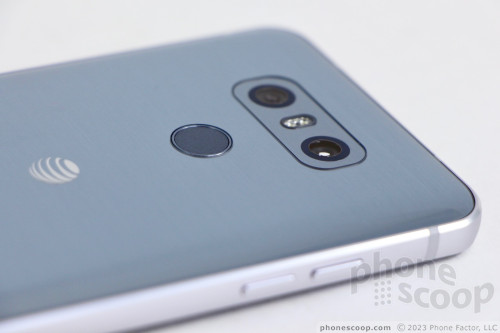
The G6 is waterproof with an IP68 rating, which means it can handle full submersion in water for a half hour, in addition to getting wet in the rain. The phone easily lives up to LG's claims here. I held it under running water for more than a minute and let it sit in a bucket of water for while. Water runs off the G6 as it does a duck's back. LG also says the phone can handle some punishment thanks to the design of the screen. I dropped it onto carpet and wooden floors without issue. I'm too chicken to drop it on concrete. I mean, it is nearly all glass. LG insists that a great deal of engineering effort went into durability, but you may feel better getting a case for it.
From a design perspective, the LG G6 is nearly flawless. The phone is everything I want in a 2017 flagship and more. It's simply stunning in every way. Well done, LG, well done.
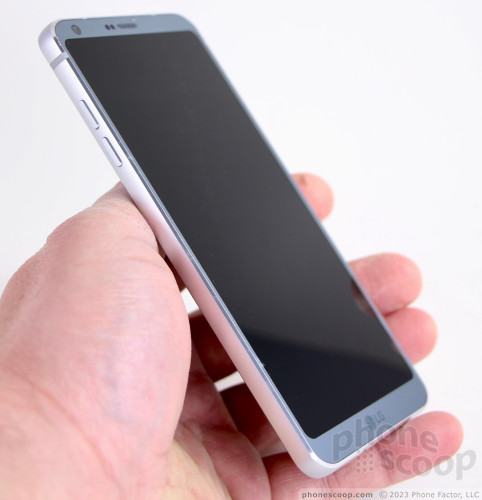
Screen
The G6 has an IPS LCD display and it is staggeringly attractive. LG is making a big deal about the screen's new aspect ratio. It measures 5.7 inches across the diagonal and packs quad HD+ resolution, or 2,880 by 1,440 pixels. The 2:1 aspect ratio means the screen looks narrow and taller when compared to traditional 16:9 displays. Interestingly, the screen has rounded corners and I really like the effect. The size and resolution make for an incredibly sharp display. The LCD panel puts out plenty of light. I had no trouble using the phone indoors and out, though I found the auto-brightness tool wasn't very effective. You may need to manage brightness manually. Viewing angles are excellent; you'll notice a slight drop in brightness as the phone is tilted, but there's no color shift. This is as fine a display as you're going to find on a modern phone.
Signal
LG sent us an AT&T-branded G6, so we tested the phone on AT&T's network in and around New York City. The phone performed on par with the best phones I've used in the area. It remained connected to LTE 4G throughout my time with the phone; I never saw it drop to HSPA / 3.5G. The G6 had no trouble placing calls, even under the worst signal conditions. It maintained calls at highway speeds, and didn't drop or miss any while I tested it. Data speeds were impressive. Peak speeds on AT&T's LTE network topped 50 Mbps, though average speeds were less. The G6 was a fine tool for browsing through Facebook, Instagram, and other social apps. Streaming media over 4G didn't tax the phone at all. Music and video alike flowed through the G6 without buffering or interruptions. The cellular radio works well.
Sound
Most people will be impressed with the G6's voice quality; I know I was. The earpiece produces bright, punchy voice tones. With the volume up all the way, you can hear calls in most places you might bring the phone. I was able to maintain conversations in noisy coffee shops, rowdy basketball games, and busy shopping malls. I did notice a very small amount of static in the background when the volume is cranked, but it didn't impact clarity overmuch. I tested standard voice calls and VoLTE calls. I noticed a small uptick in clarity with VoLTE calls. People said I sounded very good via the G6.
The speakerphone works well, too, and delivers crisp, clear conversations that are audible in moving cars, at home, and most other places. The speaker is on the bottom edge of the phone, which I think is the best position given how people often hold their phone when using the speaker.
Ring tones and alerts blast from the bottom of the G6 with the force of a bullhorn. I was able to hear the phone ring from anywhere in my two-story house. The vibrate alert is decent.
Battery
LG packed a 3,300 mAh battery inside the G6's slim chassis and it does a great job. The phone typically had plenty of power to spare at the end of each day, often on the order of 20% to 30%. I pushed it heavily on several days, with lots of camera / video use and even uploaded a 22-minute 4K video to YouTube. These activities definitely chewed through some capacity, but I still had enough juice left at bedtime. Whatever electric mojo LG has tuned in under the hood, it's working.
LG gave the G6 extra tools to help manage battery life. In addition to the standard Android power saver mode, the G6 also has a setting that specifically reduces the processor power given to games. Regardless, the battery life is good enough that I didn't need these tools.
Lasty, the G6 supports Quick Charge 3.0 through its USB-C port. Thanks to the included fast charger, the G6 will power up quickly when needed. It also supports both major wireless charging standards, which means it is compatible with most wireless charging pads. I tested it on a Qi-based pad and it worked fine.
Bluetooth, GPS, NFC, WiFi
The G6's secondary radios all worked well. Bluetooth was a cinch to use and the NFC radio helped me pair the G6 with a wide array of Bluetooth accessories. I used the G6 for several calls via my car's hands-free system and they sounded very good. Music had a rich sound when passed through a good Bluetooth speaker.
You can use the NFC radio for mobile payments via Google's Android Pay service.
Google Maps and the G6's GPS radio were bosom buddies. The phone located me within seconds and was accurate to about 10 feet. That's excellent. Real-time navigation between points worked flawlessly.
The WiFi worked just fine.
Software
Lock Screen
The full lock screen behaves just like it does on any other Android phone, but some of LG's customizations improve the experience a bit.
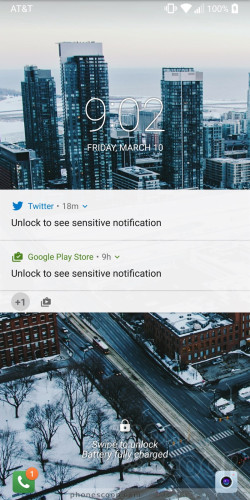
First, the G6 adopts the "Always On Display" pioneered by Motorola and later copied by other phone makers. The screen always shows the time, date, and battery life in white on the black screen. Incoming notifications, such as email, SMS, or Facebook, will cover up the clock for a split second before lining up next to the battery meter. This way you can always see what unread notifications await within. I really like this feature and LG's implementation works well.
You can customize the lock screen a bit. For example, you can set which shortcuts appear at the bottom, as well as where the clock appears on the screen. You can also adjust the swiping animation and choose whether or not to display the weather.
The G6 includes LG's KnockOn and Knock Code. Double-tap the display to wake the lock screen. This is most helpful when the phone is sitting on a table or desk. KnockCode is an optional security tool that unlocks the phone through a custom pattern of taps on the screen. I'm not sure it's necessary, given the G6's fingerprint sensor, but at least you have more than one way to wake the screen.
The G6's fingerprint reader is quick and reliable. It takes only a few moments to set up several fingerprints and I found the reader was consistently the fastest way to unlock the phone. The reader works with just a light touch; you don't have to press the actual button. Beyond unlocking the phone, the fingerprint reader can be used to secure individual photo galleries and QuickMemo files, but not apps or folders.
Home Screen
The G6 ships with Android 7.0 Nougat, though it's hidden quite well under LG's heavy interface layer.
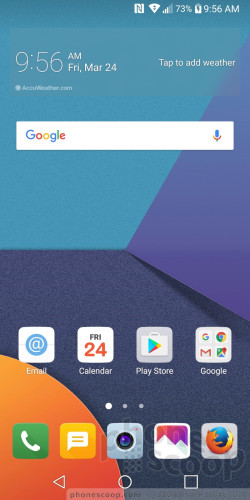
The G6 ships with three different versions of the LG home screen. Out of the box, the default home screen doesn't include the app drawer. This means users don't have access to a central repository for apps; instead, all the apps are bundled together in folders on the home screens. I don't like this home screen layout, as it reduced the amount of screen real estate for widgets. You may elect to choose a different home screen experience that includes the app drawer (literally called Launcher + App Drawer). The third home screen experience is LG's EasyHome, which dumbs down the interface for novice users.
The device allows you to switch up wallpapers and other behaviors with ease. I like that apps can be arranged in various grid configurations (4x4, 4x5, 5x5) to allow for more effective use of the screen's real estate, and, using menu options, you can elect to hide apps you know you won't use often, as well as bring them back when needed. You can control behaviors such as fonts, font size, button arrangement, screen effects, and so on.
LG didn't mess with the Quick Settings panel too much. It includes five toggles across the top, as well as a slide to control screen brightness. You can customize which toggles appear in the Quick Settings screen and swipe the toggles to see more. The panel also allows you to access, act on, and dismiss notifications.
The main settings tools are broken down into several tabs by default, but you can adjust it so they appear on a single screen. It's rather dense and not that easy to use.
LG's Smart Bulletin is still around. The tool is inactive when you first boot the phone, but you can choose to turn it on if you wish. When activated, Smart Bulletin becomes the left-most homescreen and provides quick access to certain data sets, such as LG Health, your calendar, and action items. I didn't find it that useful.
What about those 320 extra pixels offered by the taller display? Some of those extra pixels are eaten up with the on-screen controls (back, home, etc.). On the G6, there's a pretty big gap between those buttons and the dock. There's also a big gap between the dock and the first row of apps/widgets that you can place on the home screen. Apps designed using Google's latest tools and guidelines will automatically adapt to fill the whole screen; older apps may leave the top and bottom as black bars. LG also claims to have some extra logic to help apps fit the space as well as possible. From what I can tell, it mostly just stretches the control elements at the bottom of the screen. I did notice that split-screen multitasking is improved thanks to the extra space. (There is one major exception with respect to the screen real estate, and that's the camera. More on that below.)
The G6 is the first phone other than the Pixel / Pixel XL to ship with the Google Assistant aboard. (Since LG announced the device in February, Google has made Assistant available to most Marshmallow and Nougat handsets through a separate download.) I like the Google Assistant a lot and have slowly been using it more and more. Utter the awkward "Ok, Google" catchphrase and the G6 will turn on and begin listening to your voice commands. It works just as well on the G6 as it does the Pixel and other Android phones. The Assistant is far better at understanding natural language requests than Apple's Siri.
Please, don't fret about the processor. The G6 ships with Qualcomm's Snapdragon 821 processor, the company's most advanced chip as of last fall, rather than the brand new Snapdragon 835. If someone says the 821 isn't good enough, don't listen. For one thing, LG worked with Qualcomm to port some of the 835's best features to the 821. The result is a smartphone that hauls ass. The G6 does everything in a blink of the eye. I couldn't find any task or app to tax the G6 while I tested it. Games ran smoothly and VR content presented no trouble whatsoever. It's a quick phone.
Camera
LG seems to have borrowed some features from the V20's powerful camera app, but it overhauled much of the experience to better suit the G6's 2:1 display and dual rear cameras. The G6 doesn't have a physical camera button, but you can launch it from the lock screen or with a quick double press of the volume-down button.
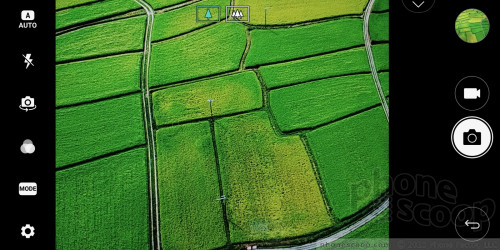
Both cameras on the rear of the phone have 13-megapixel sensors, though one shoots with a 71-degree (normal) field of view and the other shoots in a 125-degree, wide-angle field of view. A toggle at the top of the camera app allows you to jump from the regular-angle camera to the wide-angle camera any time, no matter which shooting mode you're in. Like the iPhone 7 Plus, the G6 allows you to zoom seamlessly from one camera to the other.
The camera interface is a really busy place. Starting from far left, a batch of options runs down the left side of the main screen and includes flash controls, user-facing camera, film effects, shooting modes, and settings. None of these buttons cannot be customized.
There is a decent selection of shooting modes, including auto, manual, “square”, popout, food, snap, panorama, 360-degree panorama, slo-mo, and time-lapse.
“Square” shooting is the big addition and made possible thanks to the 2:1 screen aspect ratio. The UI changes a bit to show you two identical squares. The left square is the viewfinder while the right square is a preview of the last image you took. LG says this lets people compare the previous shot to a potential new shot so they can get a better picture if they want. This is called Snap Shot. But there's more. Snap Shot is only the first of four Square modes. Match Shot lets you take two separate square photos and then paste them together, or take two photos or videos at once using the main rear camera and user-facing camera. Grid Shot lets you take four photos or videos and the create a large, square collage, while Guide Shot lets you use an image as a guide to take successive photos with the same composition. For example, let's say you want to take four pictures of your dinner plate, from meal start to meal end. You can use the first to line up the successive shots so they all have the same framing.
Each of these modes has a tutorial to help you learn how to use them. I didn't have any trouble figuring them out, and I'm sure you won't either.
As for the rest of the shooting modes…
Pop-out mode creates a picture-within-a-picture effect. In other words, you have a smaller box in the middle of the frame with the subject, and larger box around the outside to which you can add effects (blur, fisheye distortion, etc.) to make the central image pop.
The multiview mode lets you shoot pictures with both rear cameras and the front camera at the same time so you can include yourself in a three-panel montage. There are several different panel configurations and you can arrange them however you wish.
The snap shooting mode lets you assemble video clips into a 60-second story. You can shoot with 1, 2, or 3 panels in a variety of configurations. A quick tap of the shutter button records a 3-second video segment. You can piece together up to 20 of the 3-second clips, or press-and-hold the shutter button to record longer clips up to 60 seconds long. It takes some practice to use effectively.
Manual mode is for knowledgeable users who want to be creative. As the name implies, you have full control over everything: white balance, focus, brightness, ISO, and shutter speed. Shutter speed can be set as long as 30 seconds, (for dramatic and/or creative night shots.) You can also set the auto-exposure to lock. Each option has its own slider that lets you, for example, alter the focal point between close and far. As you do this, the screen changes to provide a preview of how the resulting image might look. It gives you some neat insight into how each individual part of the exposure process may affect the final result. It is not easy to master, and doesn't always produce the results you're seeking.
Looking for HDR? It's buried in the settings menu. You can set it to on, auto, or off. I wish the HDR tool was accessible from the main viewfinder.
The user-facing camera includes a number of its own tools, including a screen flash, smile capture, gesture shot (make a fist to start a photo timer), and beautification filters.
The G6's camera software is extraordinarily quick to focus and snap photos. It's a powerful app that performs well. I wish it were less overwhelming.
Photos/Video
The G6's twin cameras are the best ever to grace an LG handset. LG picked a fantastic sensor/lens combo and is putting the Snapdragon 821's image processing capabilities to effective use. Where the standard view lens has an aperture of f/1.7, the wide-angle lens has an aperture of f/2.4. Other features include optical image stabilization (on the standard lens), tracking focus, and zero shutter lag image capture. The results are amazing.
I used the camera for an afternoon in Barcelona and came away impressed with the results. The G6's ability to capture even exposures that are sharp and accurate with respect to color is second to none. I shot in a really challenging environment with lots of shadows and bright spots, and the G6 was able to balance them out thanks to the auto HDR function. The images I took around my home and of my kids were great, too. Whether you're shooting normal or wide-angle, the G6 delivers.
I must say, I really like the wide-angle camera. There's definitely ripe opportunity to take advantage of stuffing more into the image with the wide view. It was particularly helpful on tight city streets where you want to capture as much of the background as possible.
The 5-megapixel selfie camera shoots at a 100-degree angle a f/2.2, but you can toggle a more narrow view of 82 degrees if you want. There's no second lens here; LG is using software to accomplish the effect. The selfie camera also has a skin tone fixer-upper, a lighting adjustment tool, and a lot of filters. I was pleased with the results. It doesn't offer quite the same visual pop as the main camera, but it's a fine tool for taking self portraits for sharing across social networks.
LG perhaps offers too many options when it comes to video. As you'd expect, you can shoot at 720p HD, 1080p HD, and 4K UHD all in the standard 16:9 aspect ratio. Alternately, you can shoot 1080p HD in LG's 18:9 aspect ratio, which is actually the default. This means the video you shoot on the phone will fill the phone's screen, but won't quite fill today's 16:9 screens.
The footage is excellent. I shot a lengthy video of my daughter's play over the weekend and I was able to adjust exposure to handle the bright lights on stage and show accurate color. I was very pleased with the video results.
The G6 truly does impress. You can leave the dedicated camera at home and use the phone for nearly all your photography needs.
LG Stuff
LG installed a number of its tried-and-true software tools on the G6 so LG fans will have plenty to be happy about.
First up, QuickMemo. It's accessible from the Quick Settings panel. As always, it takes a screenshot and then opens a basic editor so you can annotate the screenshot and share it with others.
Next, QSlide apps are on board, too. Certain applications, including the phone, browser, calculator, notepad, and others, can be shrunk down to smaller sizes for multitasking. You can drop several QSlide apps on the home screen and quickly bounce between them. I've always liked that you can control the transparency of QSlide apps.
Last, LG's Health app is a powerful fitness companion. It includes beginning and advanced modes to cater to individual needs. LG suggests new users start with the beginner toolset and move to the advanced tools once they've reached a certain level of health and fitness. If you're interested in doing things like tracking steps and diet, that's easy to do with LG Health. It handles walking, running, climbing and cycling, and provides an overview of your progress.
AT&T Stuff
Carrier-branded phones can be annoying and I'm here to warn you that AT&T has sullied its variant of the G6 with a ridiculous amount of trashy bloatware. The most egregious are AT&T's own apps, which are pushy about being selected as the default tool for this, that, and the other thing. There are far too many AT&T-branded and partner apps that cannot be deleted, such as AT&T Protect Plus, FireFox, Smart Limits, LookOut, Games, Uber, Yellow Pages, and DriveMode. AT&T, LET ME DELETE UBER!
AT&T's DirecTV app is terrible, as it constantly fills up the notification tray with advertisements. You can turn them off, but it takes some digging. This aggravates me to no end. Why do you hate your customers so much, AT&T?
Wrap-Up

The G6 is LG's best phone. It's LG's best turn at design, best example of engineering as an art form, best in raw performance, and best in delivering a good experience across the board. It has so few weaknesses I can hardly think what they might be.
You just might fall in love with the phone at first sight. The glass-and-metal chassis is classy and assembled brilliantly. It's a fine size and the screen will surely push all your buttons with eye-popping visuals. Water resistance has become a table-stakes feature for flagship phones and the G6 has it covered. I appreciate the 3.5mm headphone jack, USB-C port, wireless charging, and memory card support. Wireless performance was great, voice call quality is very good, and battery life is right where it needs to be.
The Android 7 operating system runs flawlessly and LG's user interface strengthens it by adding more ways to customize the experience. The camera application is truly powerful, if a bit overwhelming. Photo and video quality is up there with the best the market has to offer.
The fact that LG kept the price close to the $675 mark is just amazing. It's a bargain. Who should buy this phone? Anyone. Everyone. The LG G6 is awesome.
Comments
Bands on Unlocked G6
That's a bit crappy for a flagship phone.
:-(


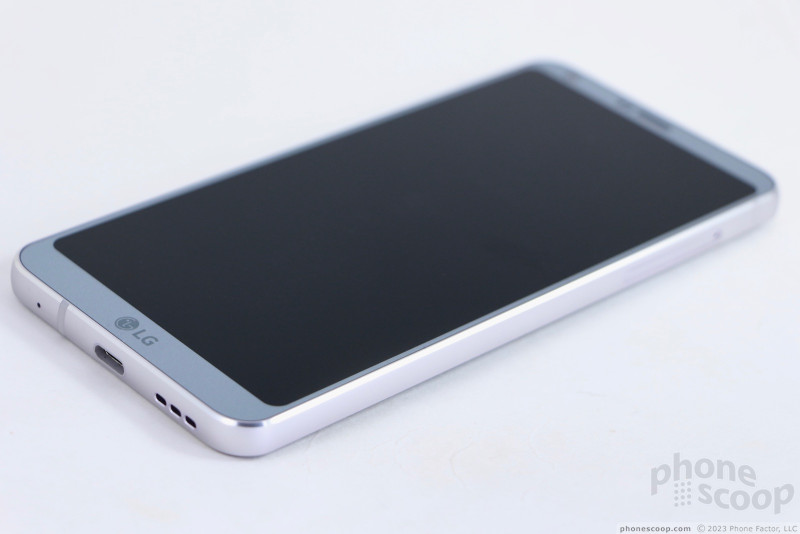




















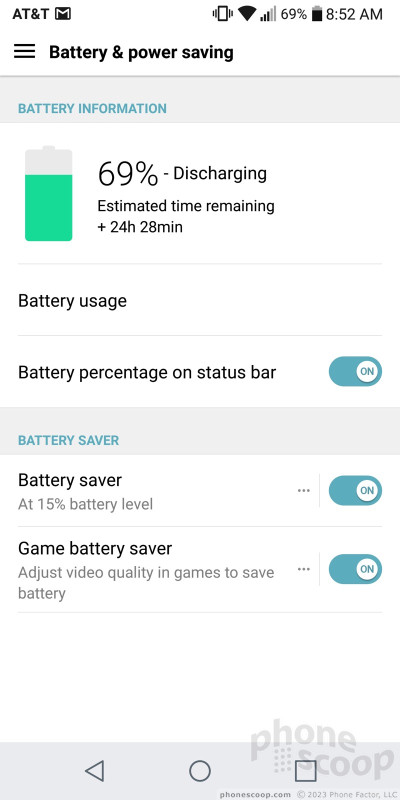




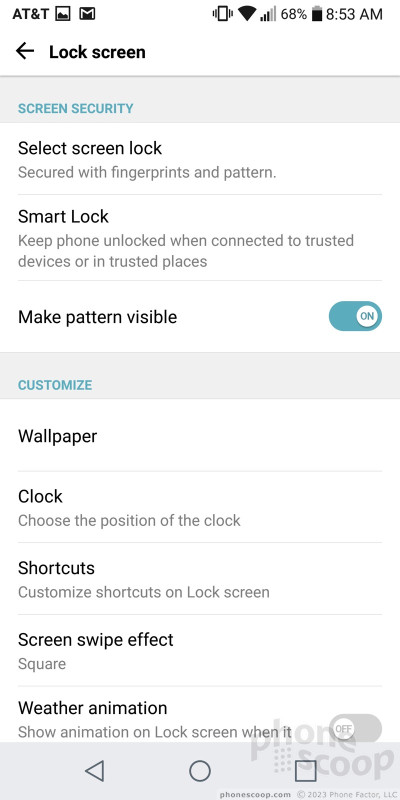









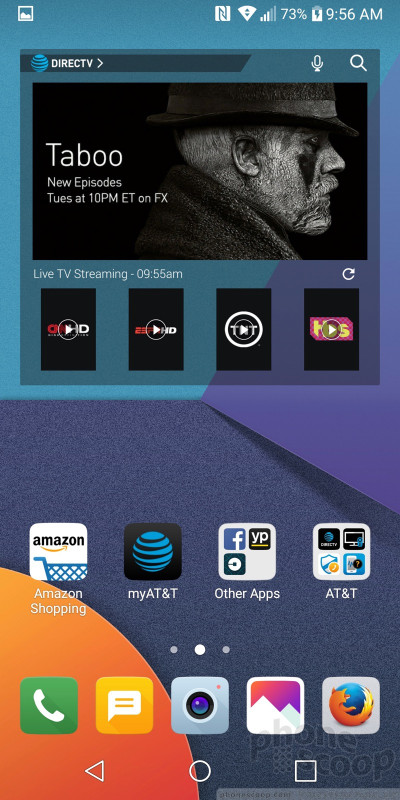











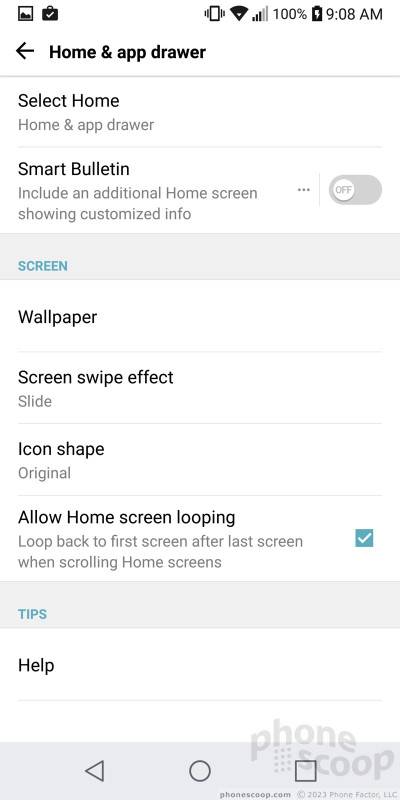









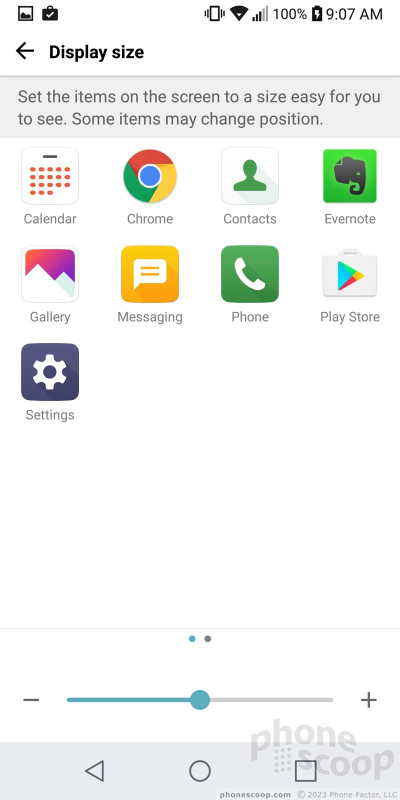









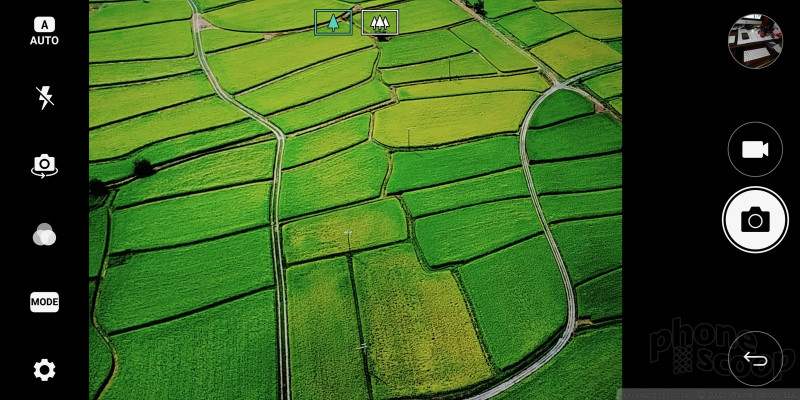








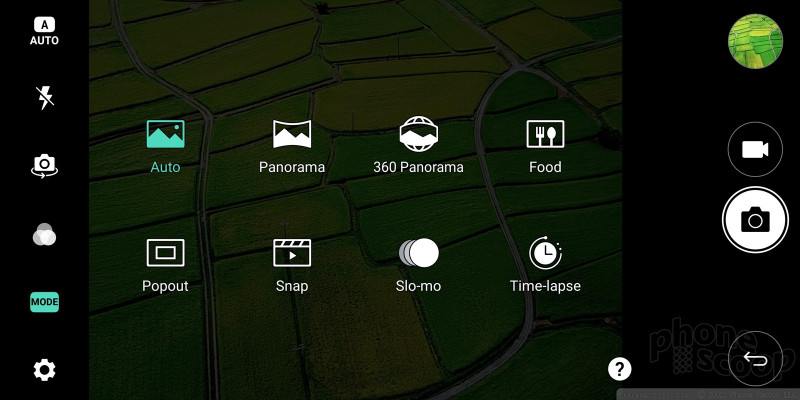





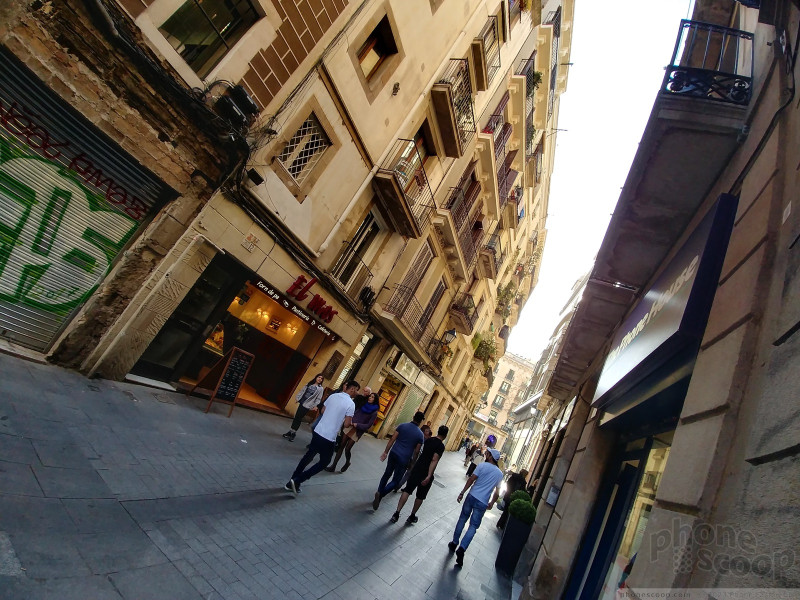




















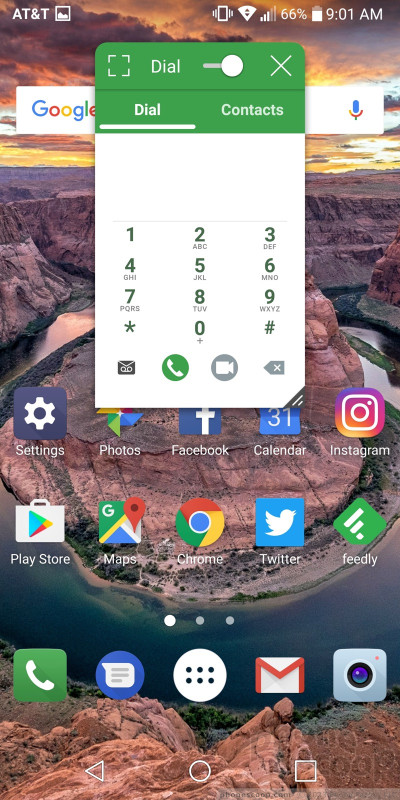




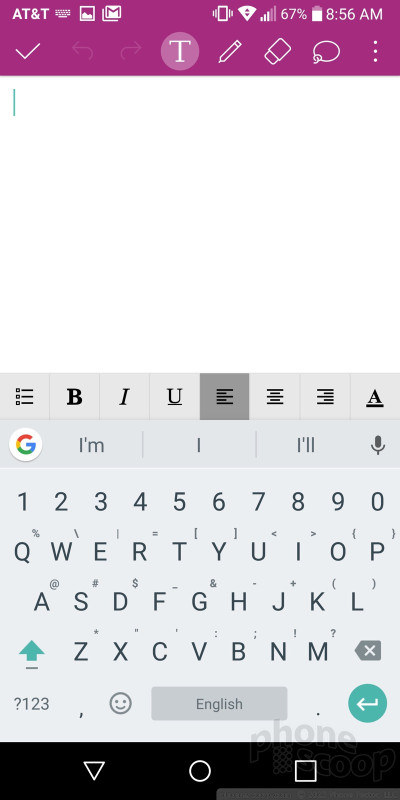





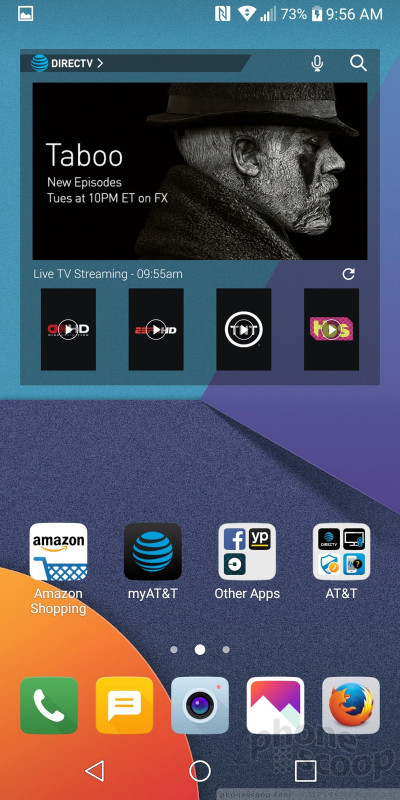





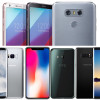 Top Five Flagship Handsets of 2017
Top Five Flagship Handsets of 2017
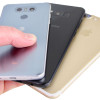 5 Best Phones to Take On Summer Vacation
5 Best Phones to Take On Summer Vacation
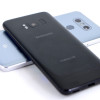 LG G6 vs. Samsung Galaxy S8: Buying Points to Consider
LG G6 vs. Samsung Galaxy S8: Buying Points to Consider
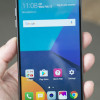 Hands On with the LG G6
Hands On with the LG G6
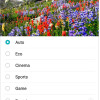 LG Touts the G7 ThinQ's 6.1-Inch Super Bright Display
LG Touts the G7 ThinQ's 6.1-Inch Super Bright Display
 LG G6
LG G6




